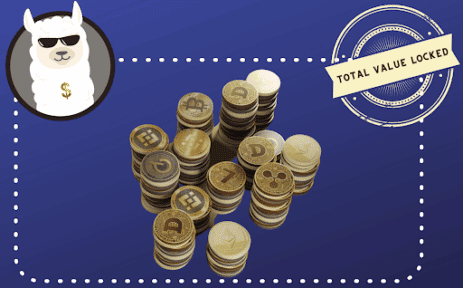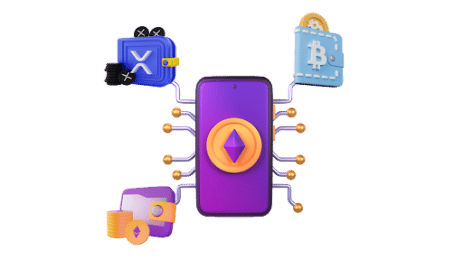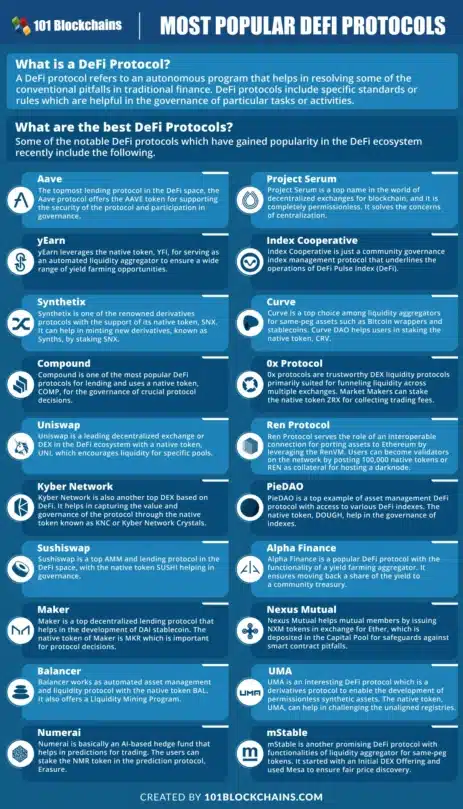To comprehend the different principles underlying lending, borrowing, staking, trading, and other financial structures in DeFi, it is necessary first to understand the basic tenets of decentralized finance. We started exploring this concept in our first article, “The future of decentralized finance: DeCi-phering DeFi.” In this article, we will cover the core principles and concepts of DeFi.
Applications of smart contracts
Smart contracts are self-executing agreements written in lines of code on blockchains such as Ethereum. When a contract’s terms are met, they use embedded conditional logic (‘if this, then that’) to execute it. It preserves the rules for establishing an agreement’s terms, automatically validates compliance, and executes the negotiated terms.
A smart contract eliminates the requirement for confidence because the terms are coded: you don’t have to know or trust the other party in the transaction. They can function without the assistance of lawyers, notaries, or other agents since they are autonomous, self-executing agreements.

Because smart contracts are created and implemented within blockchains, they inherit the blockchain’s basic qualities of immutability and dissemination.
Smart contracts, the foundation of decentralized finance, are created in various programming languages (including Solidity, Web Assembly, and Michelson). When a smart contract receives funds from a user, its code is performed by all nodes in the network in order to reach a consensus on the conclusion and the resulting flow of value. This enables smart contracts to execute securely without any central authority, even when users conduct sophisticated financial transactions with unknown companies.
With the advent of DeFi, there is a greater demand for security audits as the possibility of hacking increases. Audits of smart contracts can be performed manually or automatically. Companies such as Certik, Chainsulting, and OpenZeppelin, among others, examine smart contract software for vulnerabilities and security issues to ensure that the project is safe for public use.
Stablecoins
Cryptocurrency volatility might be frightening to the general public. Stablecoins are the DeFi ecosystem’s backbone for this reason. It is their responsibility to reduce uncertainty and keep the system stable. This is accomplished by pegging to a currency such as the US dollar. The first centralized stablecoin to be published was Tether (USDT). An over-collateralization process creates decentralized stablecoins, run wholly on decentralized ledgers, are governed by decentralized autonomous organizations, and their reserves are auditable by anybody.

In the DeFi world, Dai, Uniswap, Avalanche, and Aave are some of the most popular decentralized stablecoins.
When the underlying cryptocurrency’s price falls below a particular threshold, stablecoins are immediately liquidated. Because they may be quickly converted to the underlying asset, they can provide more liquidity than commodity-backed stablecoins. Many cryptocurrencies usually back them to spread risk.
TVL
Market capitalization is commonly regarded as a measure of a project’s performance, so it is logical to use this metric to assess DeFi’s performance. However, the market capitalization of a DeFi protocol essentially demonstrates the protocol’s acceptance from both active and passive investors. On the other hand, the total value locked (TVL) is a clear indicator of a protocol’s performance in the DeFi domain. It is the sum of all assets deposited in a DeFi protocol that generates economic activity such as lending, borrowing, economic provision, asset management, or insurance. The total value locked indicator is used to assess the overall health of the DeFi market. It acts as a useful and straightforward statistic for analyzing the popularity of a project by identifying an estimate of the number of monthly active users. A DeFi protocol with a higher TVL has more cash tied up in the platform. A smaller TVL, on the other hand, clearly indicates a shortage of capital, which ultimately translates to poorer customer yields.

Analytics platforms such as DeFi Llama can assist you in locating the TVL for a given decentralized finance protocol. These platforms provide a detailed breakdown of the total value locked in DeFi protocols worldwide. The DeFi protocols with the biggest volume of crypto assets staked in the platforms are easily identified.
Digital wallets
Digital wallets are computer programs that hold your public and private keys and link to blockchain networks, allowing you to check your balance, move money, and perform other functions. When someone sends you cryptocurrencies, they are basically signing over ownership of the coins to your wallet’s address. The private key in your wallet should correspond to the public address. If the public and private keys match, your digital wallet balance will increase, while the sender’s will decrease. Money is not physically exchanged. To complete the transaction, all that is required is a transaction record on the network and a change in balance in your crypto wallet.

Wallets are classified into two types: custodial and non-custodial. Custodial wallets are ones in which third parties retain and manage your cryptocurrency on your behalf. Non-custodial wallets give you complete control and access to your crypto assets. When you utilize a custodial wallet, you put your trust in a third party, such as a Centralized Exchange (CEX), to keep your money safe. Entrusting your cryptocurrency to a third party puts you at risk of the custodian losing your cryptocurrency due to bad management or hacking.
When you use a non-custodial wallet, you are completely responsible for keeping your cryptos secure. However, by utilizing a non-custodial wallet, you transfer security responsibility to yourself and must be fully prepared to safely keep your private keys. You will lose access to your cryptos if you lose your private keys.
Users that hold their private keys can do so in either a hot or cold wallet.
A hot wallet is a software wallet that is always online and connected to the Internet, such as MetaMask, Phantom, imToken, Trust Wallet, TokenPocket, Rainbow, and Coin98. On the other hand, a cold wallet is not linked to the Internet. Hardware wallets, such as Trevor or Ledger, store keys offline, providing security that hot wallets cannot.
Three common methods for investing in DeFi
- Trading DeFi assets In terms of total profitability, trading or investing in DeFi assets represents the most viable proposition in this industry. People can trade for long-term or short-term holdings on non-custodial decentralized exchanges (DEX) such as Uniswap, SushiSwap, and Bancor.
When such an opportunity arises, and trading conditions are favorable, some users invest by buying low and selling high.
Others are more likely to be among the first to join a freshly launched project. People who understand how smart contracts function and can tell whether a project is legitimate or not simply by reading them can make a profession by distinguishing between successful initiatives and scams. The motivation is significantly larger in this situation since investors pay presale rates for tokens that will climb 5 to 10 times after they are listed on the DEX.
Finally, we have a day trader community that actively buys and sells tokens with the tiniest profit margins. For these people, a 20% price increase is sufficient because they wish to repeat their performance at least a few times during the day.
- Yield Farming
Do you want to make money without having to work? Nothing beats getting money without having to do something beneficial for others. In the DeFi space, yield farming is the most straightforward way to make money without working.
Yield farming, also known as liquidity mining, invests a user’s existing cryptocurrencies to gain more. The technique requires investors to stake a portion of their holdings in a smart-contract-based liquidity pool, from which funds will be redistributed to other projects via DeFi protocols. The fees for use are passed on to the user as rewards.
The process is fundamentally comparable to a regular bank, where a user might deposit traditional funds. The key distinction is that there are fewer intermediaries who will reduce a user’s interest payment along the route. Users can then earn extra money directly proportional to their existing asset balance.
A yield farmer attempts to get the maximum yield while entering the liquidity market. They frequently switch from one liquidity protocol to the next in quest of the best prices.
Rather than manually sifting through many pools, DeFi users can utilize a DeFi aggregator to access a variety of decentralized exchanges and trading pools on a single dashboard, which gathers information from various exchanges and automated market makers. Consider them DeFi’s Robo-advisors. Yearn.finance, Idle, and Beefy are three popular aggregators used by yield farmers.

- Earning interest on a lending protocol
Lending is one of the most prominent DeFi use cases when measured by TVL. Users’ desire to lend and borrow crypto assets is supported by decentralized lending platforms. The old approach is turned on its head by these platforms, which allow lenders and borrowers to trade directly with one another rather than through intermediaries. DeFi loans are generally overcollateralized, which means that for every $1 locked in a lending protocol, a user may receive an additional 50 cents in leverage. Users, as lenders, do not rely on borrowers’ creditworthiness. Credit functions more like a margin loan: if the value of the assets locked in the protocol falls below a particular threshold, the smart contract instantly liquidates those assets and repays the lender. This type of borrowing works well for traders looking for leverage to boost their returns—a large market.
On lending networks, variable and fixed interest rates are available. Variable interest rates fluctuate in response to asset demand. On the other hand, fixed interest rates remain consistent regardless of market conditions.
AAVE was the world’s largest DeFi lending platform at the time of writing, with over $4.2 billion in assets. Among the other major lending protocols are JustLend, Compound Finance, and Venus.
DeFi’s rapid rise…
The number of protocols in the DeFi ecosystem has skyrocketed, and the list is growing by the day. Mark Cuban, a believer in DeFi’s power and potential, compared DeFi’s meteoric rise to “The Early Days of the Internet” when applications popped up left and right. A complete analysis of all DeFi protocols is beyond the scope of this paper, but the picture below from 101blockchains.com does an excellent job of compiling the top protocols.

The path forward for DeFi:
Current DeFi technologies are unsuitable for widespread financial use. If businesses want to include DeFi in their offers to customers, they will need to implement the same or even stricter security measures than those that have been refined over the years in the financial sector.
Digital identity is one aspect of DeFi that has made significant progress and will continue to do so in the near future.
Many organizations and businesses strive toward the objective of on-chain, self-custodied identities, including BrightID, Identity.com, SelfKey, and Sovrin. They are all user provisioned, which means that users have complete discretion over what information is shared and with whom. Bloom, for example, is a private data verification, sharing, and aggregation solution. Bloom’s multiple attestations are intended to be global and tamper-proof, allowing users to interact with DeFi services that require user ID. Credit is the Bloom team’s primary goal, and they intend to use these records to give credit ratings, know your customer (KYC), account onboarding, and financial access. Blockpass, with its PASS utility token, was another early adopter of on-chain KYC for regulated enterprises.
These advancements in digital identification, together with clarity in regulatory compliance, cybersecurity safeguards, and real-world asset tokenization, should pave the road for eventual mainstream use.




